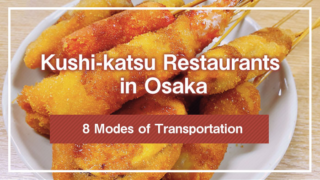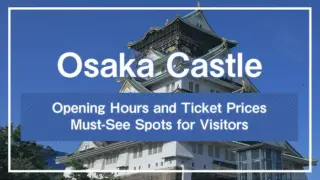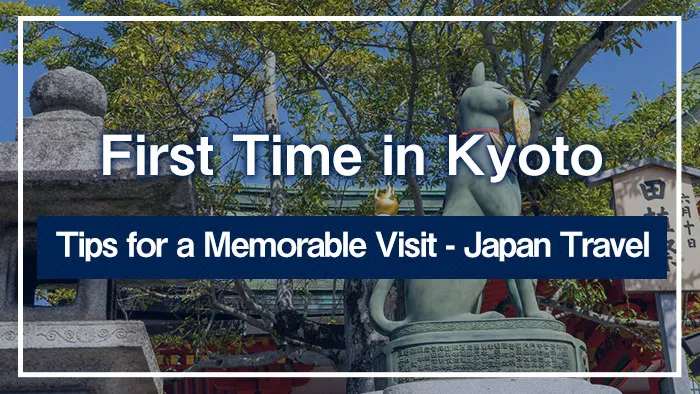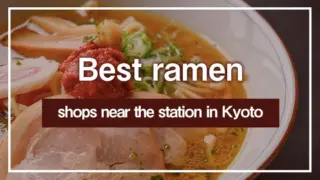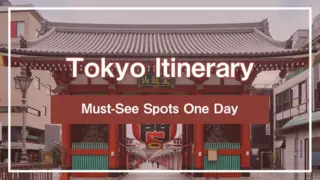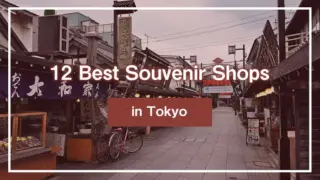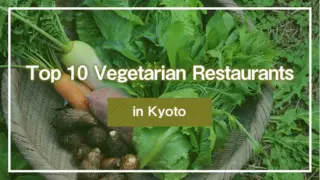Kyoto is a tourist destination blending Japanese culture and history, attracting many travelers from both within and outside the country. If you’re planning your first trip to Kyoto, thorough research beforehand is crucial.
This article provides tips for enjoying your trip to Kyoto, including the best times to visit, transportation options, and accommodation in Kyoto. We also touch on cultural experiences and dining in Kyoto, so please refer to this information to help you enjoy an unforgettable trip to Kyoto.
1.Main Attractions in Kyoto
Here are three main attractions in Kyoto:
・Kiyomizu-dera
Kiyomizu-dera is a UNESCO World Heritage Site. One of its highlights is the Kiyomizu Stage, which juts out over a cliff. The Japanese proverb “jump off the stage at Kiyomizu” originates from this stage, meaning to make a bold decision. The Otowa Waterfall is also famous, believed to bring benefits such as academic success and longevity. You can also receive a Goshuin stamp (a temple stamp) at the temple’s Nokyo-sho.
・Kinkaku-ji
Kinkaku-ji, officially named Rokuon-ji, is another UNESCO World Cultural Heritage Site. The Golden Pavilion (Shariden) covered in gold leaf is a well-known highlight. The roof is topped with a golden phoenix ornament. The mirror-like Kyoko-chi pond that reflects the pavilion is also a must-see that creates a breathtaking view.
・Fushimi Inari Taisha
Fushimi Inari Taisha is a staple sightseeing spot believed to bring good fortune in business and family safety. The Senbon Torii, a path lined with countless red torii gates, is particularly impressive and unforgettable. Fox statues, the messengers of the Inari god, are scattered throughout the shrine grounds, each with unique features worth comparing.
These spots are well-known around the world, so be sure to check them out when you visit Kyoto.
2.Tips for Enjoying Your Trip to Kyoto
Here are some tips suggested to make your trip to Kyoto more convenient and enjoyable, such as the best times to visit and transportation options. Knowing this information in advance can make your Kyoto trip smoother.
2-1.Best Times to Visit
The best times to visit Kyoto are spring and autumn. In spring, you can enjoy cherry blossoms in full bloom at spots like the Philosopher’s Path and Maruyama Park. In autumn, the beautiful fall foliage can be seen in popular locations like Arashiyama and Tofuku-ji.
Summer and winter also offer unique experiences. In summer, the Gion Festival is held in July, a historical festival of Yasaka Shrine with over a thousand years of history. Winter tends to have fewer tourists, making it easier to explore quietly.
2-2.Transportation
In Kyoto, buses and trains are convenient for getting around.The Kyoto City Bus One-Day Pass allows efficient travel to major tourist spots. From Kyoto Station, you can easily reach various attractions using JR, subway, or private railways. Renting a bicycle and using the city’s bike paths is another option for a comfortable tour.
2-3.Accommodation
Kyoto offers a wide range of accommodations from traditional ryokan to budget-friendly hostels.Ryokan offer traditional services like tatami rooms, hot springs, and kaiseki cuisine. Hotels around Kyoto Station and the Shijo-Kawaramachi area are popular for their convenience. We recommend choosing based on what you want to experience in Kyoto while taking your budget into account.
3.Cultural Experiences in Kyoto
Here are three main cultural experiences you can enjoy in Kyoto:
・Tea Ceremony
In a tea ceremony experience, you can enjoy making and drinking matcha and sometimes making traditional sweets. It’s suitable for those interested in the unique etiquette and rituals of the tea ceremony. After watching the instructor, you will typically follow by making tea yourself. Some places offer chair seating for those who find it difficult to sit on the floor.
・Kimono Rental
Renting a kimono to explore various Kyoto locations is a popular experience. Kyoto is renowned for its kimono industry, offering high-quality garments. Most rental places provide dressing and hairstyling services, so you don’t need to know how to wear a kimono. It’s recommended for those who want to spend a day dressed elegantly in special attire.
・Traditional Performances
Kyoto offers various traditional performances such as dances by maiko, puppet shows, and ikebana (flower arranging). Some venues allow you to enjoy these performances while savoring kaiseki cuisine. Through these artistic performances, you can appreciate the elegance and beauty which are unique to Kyoto culture.
Some facilities offering cultural experiences also provide support in foreign languages.
4.Dining in Kyoto
One of the representative high-end dishes in Kyoto is kaiseki cuisine. This cuisine focuses on traditional Japanese dishes using seasonal ingredients, characterized by delicate flavors and presentation that highlight the natural taste of the ingredients.
In addition to taste, kaiseki also emphasizes appearance, texture, and aroma, making it a delight for all of the senses. You can also enjoy dishes like yudofu, matcha sweets, yatsuhashi, and obanzai.
Nishiki Market is a spot where you can enjoy local specialties. Known as “Kyoto’s Kitchen,” Nishiki Market has a history spanning over 400 years. You can savor fresh ingredients and snacks, many of which are perfect for eating while walking. Many traditional Japanese restaurants and cafes require reservations, so make sure to plan accordingly. The market’s covered structure makes it a great place to visit even on rainy days.
5.Practical Information for Enhancing Your Kyoto Trip
To make your Kyoto trip a wonderful memory, there are a few key points to consider.One is language and communication. While English is widely understood at tourist spots and major hotels/restaurants in Kyoto, not all places can accommodate English speakers. Knowing basic Japanese phrases like “thank you” and “excuse me” can be helpful.
Although there are English signs, sometimes you might not find them. Using Google Maps, which has navigation features, can help you avoid getting lost. Respecting local customs and manners is also important when enjoying Kyoto. For example:
- Remove your shoes before entering temples.
- Stay quiet in sacred places.
- Dispose of trash in designated areas.
- Line up if there is a queue for transportation.
- Do not smoke while walking.
Some places may have specific rules, so check the signs and brochures for any additional guidelines.
Conclusion
When planning your trip to Kyoto, make sure to cover the top sights, cultural activities, and delicious cuisine. Visiting in spring or autumn is recommended for the cherry blossoms and autumn leaves, but other seasons also have their own charm. Pay attention to your transportation and accommodation choices for a smooth journey.
Many places in Kyoto are English-friendly, but knowing basic Japanese phrases is beneficial. Respect Kyoto’s traditions and etiquette to create wonderful memories. We wish you a fantastic time in Kyoto!
*This article is based on information available as of July 2024.



